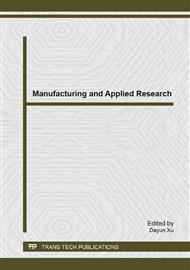[1]
J. Csank, R. D. May, J. S. Litt, and T. H. Guo: Control design for a generic commercial aircraft engine , AIAA 2010-6629.
DOI: 10.2514/6.2010-6629
Google Scholar
[2]
R. D. May, S. Garg: Reducing conservatism in aircraft engine response using conditionally active min-max limit regulators, NASA/TM—2012-217814.
DOI: 10.1115/gt2012-70017
Google Scholar
[3]
A. Thompson, J. Hacker, C. Cao: Adaptive engine control in the presence of output limits, AIAA 2010-3492.
DOI: 10.2514/6.2010-3492
Google Scholar
[4]
N. Gibson: Intelligent engine systems, NASA/CR—2008-215240.
Google Scholar
[5]
J. A. Decastro: Rate-Based model predictive control of turbofan engine clearance, Journal of Propulsion and Power, vol. 23, pp.804-813, (2007).
DOI: 10.2514/1.25846
Google Scholar
[6]
W. R. Yao, J. G. Sun: Nonlinear model predictive control for turboshaft engine. Acta Aeronautica et Astronautica Sinica, vol. 29, (2008).
Google Scholar
[7]
L. F. Xiao, X. H. Huang: Adaptive nonlinear predictive control for turboshaft engine, Journal of Aerospace Power, vol. 27(5), (2012).
Google Scholar
[8]
V. Diwanji, A. Godbole, N. Waghode: Nonlinear model predictive control for thrust tracking of a gas turbine, IEEE, (2006).
DOI: 10.1109/icit.2006.372716
Google Scholar
[9]
D. C. Saluru, R. K. Yedavalli: Fault tolerant model predictive control of a turbofan engine using C-MAPSS40k, AIAA 2013-0128.
DOI: 10.2514/6.2013-128
Google Scholar
[10]
J. Mu, D. Rees: Approximate model predictive control for gas turbine engines, IEEE, (2004).
Google Scholar
[11]
M. B. Aly. Amgad, I. Atia: Neural modeling and predictive control of a small turbojet engine(SR-30), AIAA 2012-4242.
DOI: 10.2514/6.2012-4242
Google Scholar
[12]
S. G. Zhang, Y. Q. Guo, J. Lu: Research on aircraft engine component-level models based on GasTurb/MATLAB, Journal of Aerospace Power, vol. 27(12), (2012).
Google Scholar
[13]
J. X. Mu, D. Rees, G. P. Liu: Advanced controller design for aircraft gas turbine engines, Control Engineering Practice, vol. 13(8), (2005).
DOI: 10.1016/j.conengprac.2004.11.001
Google Scholar
[14]
H. Richter: Advanced control of turbofan engines. Springer New York, 2012, pp.203-250.
Google Scholar
[15]
J. W. Fuller, A. Kumar, R. C. Millar: Adaptive model based control of aircraft propulsion systems: status and outlook for naval aviation applications, GT2006-90241.
DOI: 10.1115/gt2006-90241
Google Scholar
[16]
J. F. Wu, Y. Q. Guo: Design and simulation of aero-engine steady-state and transient-state control integration, Journal of Aerospace Power, vol. 6, (2013).
Google Scholar


